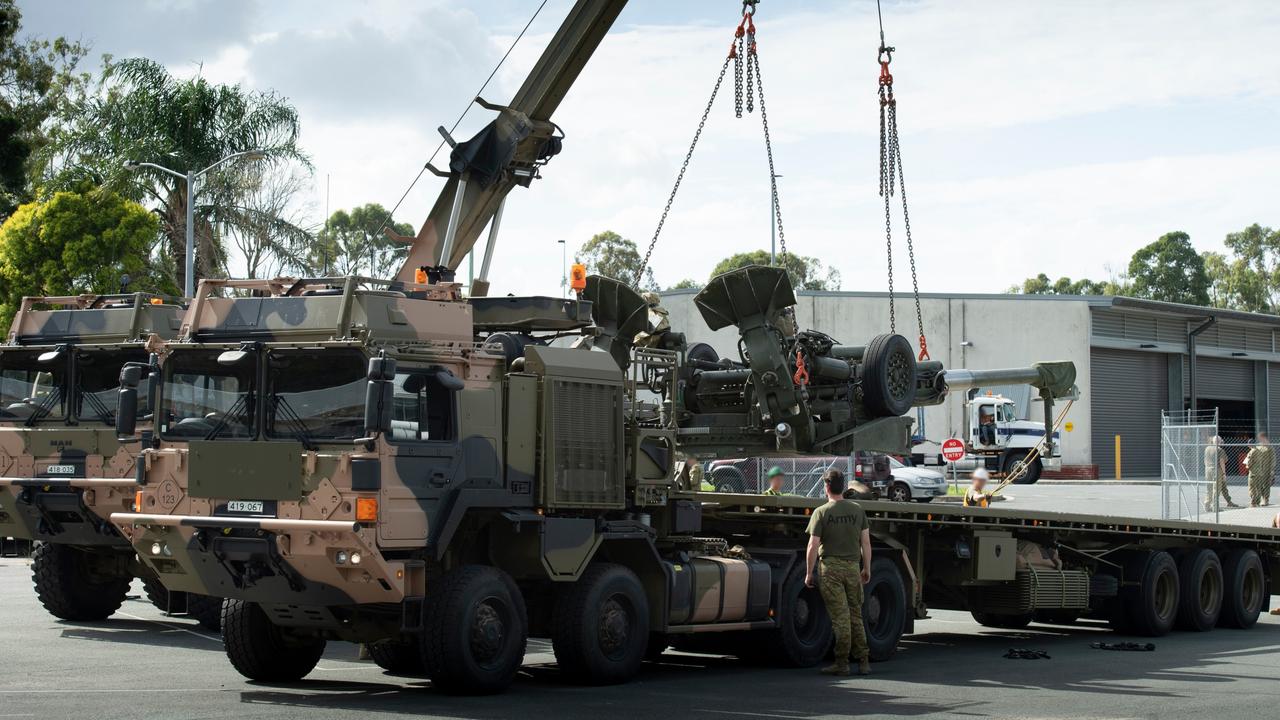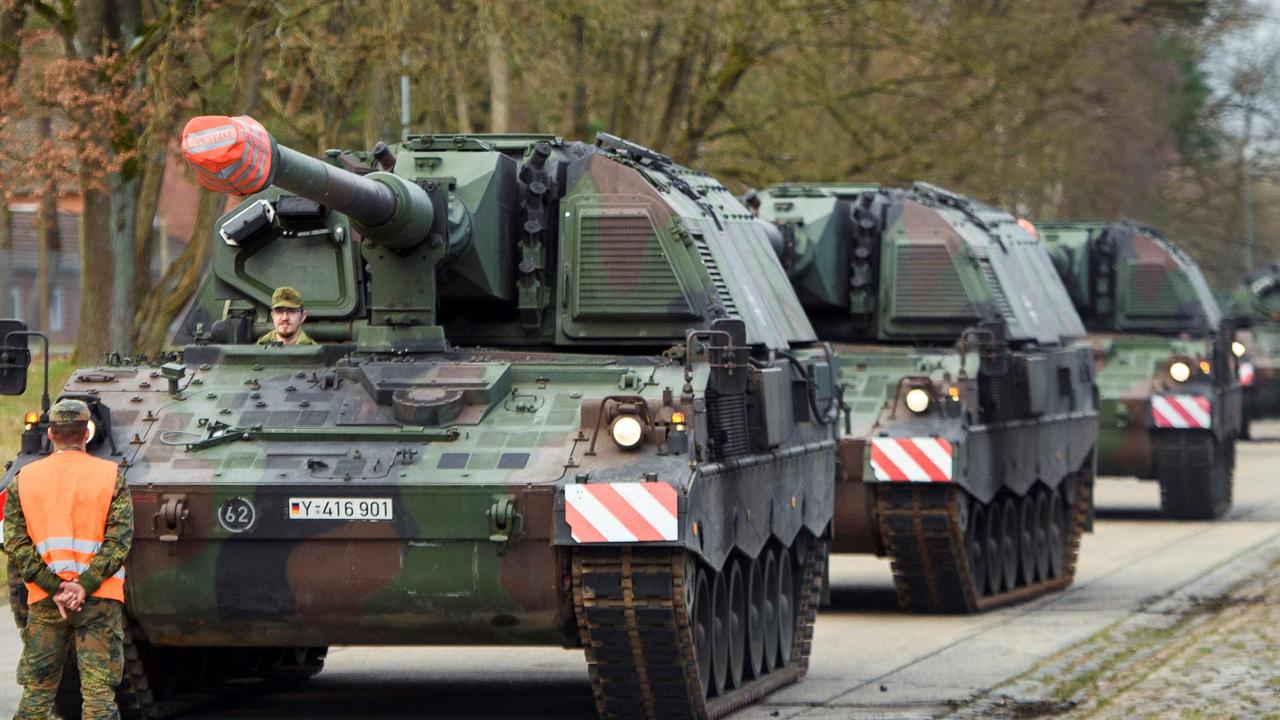Russia losing control in Kharkiv as Putin faces another failure
Australian-supplied artillery is playing a key role in fighting Russia a region that Putin needs to secure – and his military is failing badly.
Australian-supplied artillery has begun arriving on the Ukraine front line. Now it’s helping achieve what Russian weapons have failed to do – force its opponents to retreat.
President Vladimir Putin has pulled back his battered forces, unifying them for a “decisive” push on the Donbas region in Ukraine’s east.
But progress has – once again – been unexpectedly slow.
In fact, Ukrainian forces appear to be retaking as much territory on one hand as they lose on the other.
And one of the reasons it’s been able to do that is because it now has Western artillery in its possession.
The US is supplying 90 M777 towed howitzers. Most of these have already arrived. Australia sent another six, and Canada four.
These “may successfully push Russian forces out of cannon range of Kharkiv in the coming days,” assesses the Institute for the Study of War (ISW).

Artillery was supposed to be Russia’s ace up its sleeve.
It’s long been an integral part of the Kremlin’s battle strategy – rolling barrages of intense firepower, behind which its tanks and troops advance unmolested.
But it didn’t work in the opening months of the Ukraine invasion.
Now analysts are unpacking why western artillery is having such an immediate effect.
Battle for Kharkiv
The West is unwilling to commit its troops to the fight in Ukraine. But it is offering weapons as compensation.
It seems to be making an impact.
One Ukrainian military has stated NATO-supplied “antitank missiles slowed the Russians down, but what killed them was our artillery. That was what broke their units.”
He was talking about how Russian forces were repulsed from Kyiv.
Now that same artillery is holding the line around the city of Kharkiv.
“The fight they’re in the Donbas will be heavily reliant on what we call long-range fires, artillery particularly,” a senior US defence official said recently. “That’s why we’re focusing them on getting them artillery and tactical UAVs.”
#Kharkiv Update:#Russian forces are likely amassing in #Belgorod to deploy to the Kharkiv City region to prevent the #Ukrainian counteroffensive in the area from reaching the international border.https://t.co/K87fihWEzYpic.twitter.com/BqWO2g4ebH
— ISW (@TheStudyofWar) May 8, 2022
Now Russia is struggling to hold territory to the north of the Donbas region. It’s believed to be massing troops on its side of the border in Belgorod in preparation to prevent Ukrainian forces from advancing any further.
But its forces in the vicinity of the critical Ukrainian border city of Kharkiv are failing in their efforts to push back. That may be because Ukrainians – previously using the same equipment as the Russians – can now shoot without being shot at themselves.
The Institute for the Study of War (ISW) says Ukraine is “notably retaking territory along a broad arc around Kharkiv rather than focusing on a narrow thrust”.
A matter of reach
Russian artillery comes in a vast variety of sizes and types. Each often has its own specific style of ammunition. Each has a particular role to achieve in a complex, layered doctrine.
Russia’s ungainly looking armoured rocket launcher, the TOS-1, carries an intimidating array of rockets. But it can only reach 3.5km. Russia’s principal self-propelled howitzer, the 2S19 Msta, can fire cannon shells out to 29km.
But the US-built weapons now active around Kharkiv can reach almost twice as far.
The M777 towed cannon can fire at targets up to 40km away. The Caesar self-propelled howitzer extends out to 46km.
Guided ammunition – such as the Excalibur rounds being delivered to Ukraine – pushes these ranges further while providing pinpoint accuracy.
And the difference between blanket barrages and long-range, precision-guided strikes may be what keeps the city of Kharkiv secure.
Every time Russian tanks, trucks and troops move into the open to assemble for an assault – they are found by loitering drones and hit by long-range cannon fire.
That means they have to retreat to find a safer place to assemble.
When every shot counts
NATO’s armies have long since standardised on a single 155mm-sized barrel. This is large enough to suit a wide variety of advanced shells to be designed – each with a different role.
“In this situation, artillery, while requiring more advanced training and more than one person to operate, has a greater range than traditional ammunition and can help Ukraine continue to wear down the Russian forces – who still outnumber them,” says George Mason University researcher Jordan Cohen.
The US builds the 155mm M777 towed howitzer. Germany makes the PzH 2000 155mm self-propelled howitzer. France has the Caeser truck-mounted 155mm howitzer.
All can share the same ammunition.

Each cannon, therefore, can adjust its role in an instant. It can fire an M829 Excalibur GPS- guided shell at any designated 2m by 2m location. It can then switch to fire a projectile that homes in on a laser designator (often carried by a drone), picking out a specific target – such as a commander’s armoured vehicle.
And the joint French/British BONUS artillery shell doesn’t need any help. It ejects two “smart” warheads when it arrives in the general area of an enemy position. These use their own sensors to identify and hit enemy tanks.
Given the longer reach of Ukraine’s new weapons, Russia has to rely on its combat helicopters and strike aircraft to negate this threat. And neither have been proving particularly successful – suffering heavy losses attempting such strikes in the past week.
“The international military support for Ukraine prevents Russia from holding land and establishing air superiority. If this continues, Russia will need to figure out a different way to wage war,” concludes Mr Cohen.






